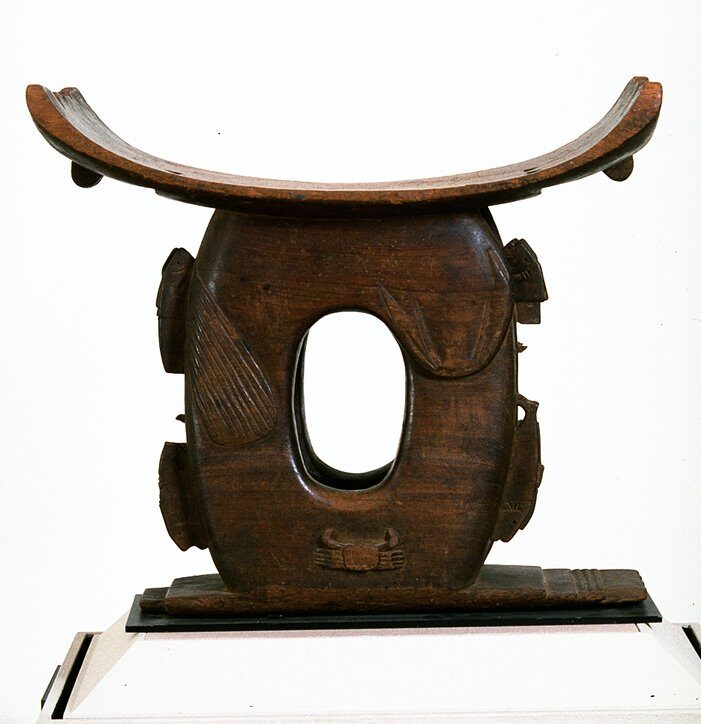Stool with Mudfish and Crab Motif
Akan

Description
The stool itself is a very important symbol among the Asante, as it plays a large role in the story of the formation of the Asante kingdom. This example was a royal stool, which made it an essential part of the well-being of the entire community. A stool is a highly personal possession and is believed to house the soul of its owner. This is especially important in the case of a king. When not in use, stools are laid on their sides so no wandering spirits sit in them and contaminate the soul of the owner. The symbols of the mudfish and crab clearly combine to express several basic ideas of Asante chiefdom. The mudfish is a symbol associated with royalty and concepts of rebirth and regeneration. It also relates to two proverbs of the Asante: "When the mudfish swallows anything, it does so for the master," and "If the crocodile [a symbol of the king] catches the mudfish, it does not deal leniently with it." A proverb associated with the crab teaches that, "A crab knows the language of the water since he lives in it." This could refer to the divine nature of the king, who has access to the world of the gods and their support in taking care of his subjects. The crab is also associated with gold, which is found in the river where it lives, and which formed one of the bases for the growth of the powerful Asante state. Thus, as the mudfish supports the stool, the subjects support the king, who in turn serves their needs.
Usage Rights:
If you are interested in using an image for a publication, please visit https://umma.umich.edu/request-image/ for more information and to fill out the online Image Rights and Reproductions Request Form.